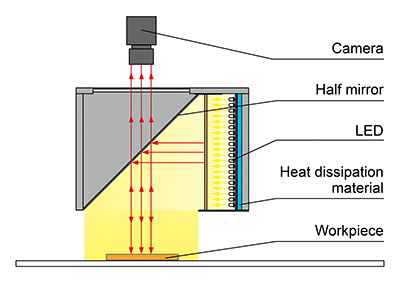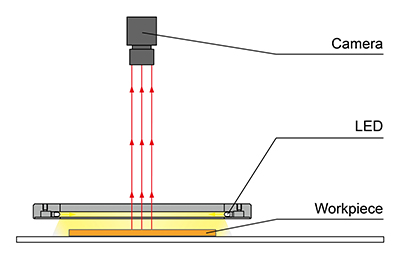DOAL effect
 |
| A coin under Diffuse On Axis Lighting, or DOAL. |
Darkfield effect
 |
| Same coin inside a Darkfield light. |
A DOAL light uses a beam splitter to evenly light a surface while allowing the camera to "see through" the light. It's as if the light is coming from the camera, but in fact the beam splitter (partially silvered mirror) sends some light to the surface, and allows the light reflected off the surface to go to the camera The beam splitter is placed between the camera and the inspection surface, at a 45 degree angle. A diffuse light panel is placed next to the beam splitter at 90 degrees from the camera.
 |
| CCS LVF3 DOAL light. |
The surface that is perpendicular to the camera will reflect the most light. Any change in height will scatter the light. The elevation changes will be darker as they scatter the light.
The Darkfield ring light will not reflect light from the surface perpendicular to the camera to the camera. Only a change in elevation will reflect light to the camera.
 |
| CCS LDR-LA1 Darkfield ring light. |
If Both lights are used at the same time the edges won't have the high contrast, but the entire surface can be seen. Notice how the rim of the coin can be seen in this image.
 |
| Both DOAL and Darkfield are used in this image. The darkfield intensity is low so the edges won't be washed out. |
No comments:
Post a Comment